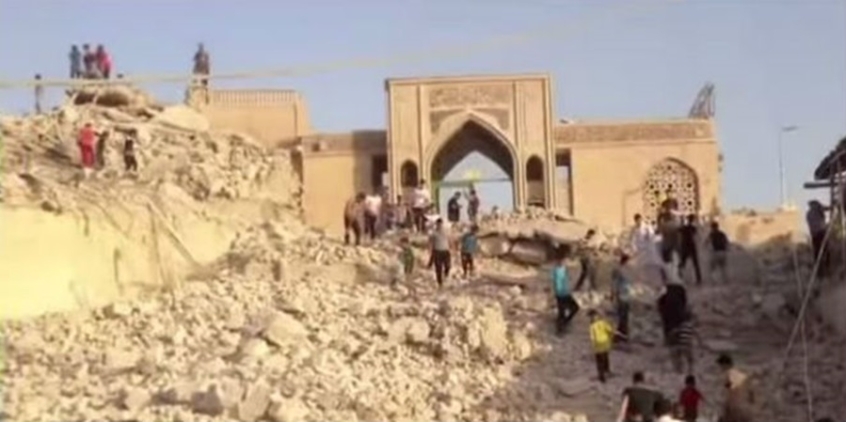
In destroying the tomb of an Old Testament prophet, the Islamic State (ISIS) unwittingly unlocked a Biblical treasure: the historical proof of a king mentioned in the Bible.
Following the Iraqi army's liberation of some parts of the ISIS-occupied city of Mosul recently, Iraqi archaeologists announced their discovery of the palace of the Biblical King Sennacherib. The palace turned out to be buried underneath the tomb of the prophet Jonah in the Biblical city of Nineveh, Breaking Israel News reported.
The discovery would not have been made had the ISIS militants not destroyed the burial site of Jonah, who is known as Nabi Yunis in the Quran, in the northern Iraqi city of Mosul in July 2014.
At first, the archaeologists expressed dismay that ISIS militants demolished the site using dynamite. The jihadists also dug tunnels underground and carried away hundreds of precious artefacts to sell on the black market.
But upon entering the tunnels, the archaeologists were stunned to find an unexpected treasure: the 2,300-year-old palace of Assyrian King Sennacherib, who reigned from 720 BC to about 683 BC.
The Bible says that during the reign of the Jewish king Hezekiah, Sennacherib tried to conquer Jerusalem, but "the Angel of the Lord (The Lord Himself)" slew 185,000 of his invading Assyrian soldiers. "When he returned to Assyria, his own sons murdered him," according to Bible History.
The tomb that the ISIS destroyed was that of Jonah, a prophet of the Lord who was called to deliver a message of repentance to the city of Nineveh, the capital of the Assyrian Empire.
According to the Bible, Jonah refused to heed the Lord's bidding and tried to escape by way of the sea. However, a violent storm developed, and the men aboard the boat had no choice but to cast Jonah overboard, at his request. "Jonah was then suddenly swallowed by a great sea monster which had been prepared by the Lord for this purpose," according to Bible History.
The archaeologists acknowledged that ISIS' destructive efforts produced positive results, however ironic that may sound. Before the Islamist militants came to the site, it was largely unexplored, they said. The last excavation made to explore the site was made way back in the 1950s, but the explorers never reached as far as Sennacherib's palace.
"There's a huge amount of history down there, not just ornamental stones," Iraqi archaeologist Layla Salih, who is supervising the team carrying out the unscheduled exploration, told The Telegraph.
"It is an opportunity to finally map the treasure-house of the world's first great empire, from the period of its greatest success," she added.


















